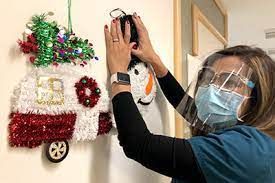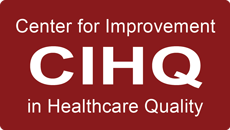Telehealth: Familiar with the Advantages but it may be time to consider the Disadvantages
Has the time come to reconsider best practices for optimal patient outcomes?
january 2022
By Jody Randall MSN, RN, CIC, HACP-CMS, HACP-PE
CEO and Founder
Having been in the midst of the pandemic in a busy acute care setting, I too have welcomed telehealth technology. Although we are still dealing with the day-to-day pressure that Covid-19 has created for the healthcare industry, including exhausted healthcare personnel, it may be time to reevaluate the utilization of telehealth/telemedicine to ensure that we are providing the best possible care for patients.
As clinicians, we understand that in order to optimize patient care we should implement and adhere to evidence-based practices regarding the care that we provide to patients. We all know that prior to the pandemic, use of telehealth technology in a healthcare setting was not utilized nearly as frequently as it is today. Has the time come to reevaluate adherence to evidence-based practices for optimal patient outcomes?
If a provider is not able to auscultate heart or lung sounds through direct patient contact, he or she may not be able to correctly diagnose a patient’s medical condition. I was recently made aware of a scenario wherein a patient who was suspected of having a stroke was evaluated using telehealth technology. During the course of the patient's hospitalization, a neurologist conducted a neurological exam only utilizing “face time” from his remote location which did not include a hands-on physical examination of the patient. Knowing what a true head-to-toe neurological evaluation entails, this caused me to question if this type of telehealth examination could be considered comprehensive, thorough in nature, and more importantly, provide optimal patient care.
Another area to consider when reevaluating the utilization of telehealth in day-to-day practice should be how medications are being prescribed. Prior to the pandemic healthcare providers were expected to adhere to antimicrobial stewardship best practices. The need for antimicrobial stewardship (ASP) measures have been widely adopted and are well recognized by infection prevention regulating authorities such as the Centers for Medicare and Medicaid Services (CMS) The Joint Commission, and Centers for Disease Control and Prevention (CDC), for example.
The reason for the adaptation to ASP best practices is because of the growing number of multidrug resistant organisms (MDRO) that are widespread throughout communities and healthcare facilities along with a growing number of newly emerging MDRO’s. A few well-known examples of these MDRO’s include Clostridioides difficile (C.difficile) and Methicillin-resistant Staphylococcus aureus (MRSA). Both of these bacteria are highly transmissible and commonly associated with healthcare associated infections in healthcare settings. MDRO’s are believed to be associated with greater than 20,000 deaths per year in the United States alone.
Pharmacists and microbiologists must be actively involved in antimicrobial stewardship programs in order for them to be successful. Has telemedicine utilization throughout the Covid-19 pandemic allowed us to revert back to the old days when antibiotics were easily prescribed for any ailment you may have had? Are providers who are evaluating patients via telehealth prescribing antibiotics to treat a patient's symptom prior to lab work being done and blood culture results evaluated?
In order to ensure that the antibiotic being prescribed is appropriate for bacteria identified, blood cultures would be drawn to identify how a patient should be treated. Antimicrobial stewardship committees should include microbiologists, pharmacists, and clinicians. As part of the ASP team microbiologists communicate with clinicians about abnormal blood culture results that are identified. If an antibiotic was prescribed that would not be appropriate for treating the bacteria identified, the pharmacist would also communicate with the ordering provider offering guidance on what antibiotic selection would be most appropriate for treating the patient. By deviating from these best practices, we could potentially be taking steps backwards in our efforts to reduce the number of MDRO’s as well as prevent the evolution of newly emerging MDRO’s.
Telehealth has been part of the healthcare industry for decades. Technological advances have helped telehealth to be what it is today. There are a substantial number of benefits as a result of being able to utilize telehealth technology. One of the major advantages include being able to provide access to care for people who live in remote areas. Telemedicine visits can be conducted by providers wherein they can interact with patients both verbally and through real time video enabling providers to be able to conduct an overall patient assessment. In some institutions, there are actual robots which are utilized to conduct physical assessments of patients in healthcare settings. Information is communicated in real time. This can be beneficial if providers are not immediately present in a healthcare facility. Other advantages include eliminating the need for travel to healthcare facilities which can be a significant hardship on patients, their care providers and loved ones. Finally, there is certainly an advantage to the cost saving aspect to be considered such as the cost of transportation, ancillary staffing required for conducting a traditional office visit. Overall telehealth has been an amazing technological advancement in the healthcare industry.
Telehealth was and still is very widely used to evaluate patients throughout the ongoing Covid-19 pandemic. Telemedicine has allowed providers to conduct wellness checks on patients remotely. The advantages of being able to conduct visits and assessments remotely has been recognized by governing authorities as a perfectly acceptable means of providing care for patients. Overall, this practice eliminated or significantly reduced the need for providers to have direct contact with patients who were known to be Covid positive or have been identified as a person under investigation (PUI) for Covid. Utilization of telehealth technology has helped us to preserve and protect our healthcare providers from contracting Covid during a time when healthcare providers are already in short supply.
In summary, I would like to emphasize that the point of this communication is strictly to raise awareness for organizations to evaluate how they are delivering care to patients via telehealth technology. I do not suggest that precautions should not be taken or to eliminate the utilization of telehealth technology. It is most important to ensure that everyone is able to perform their duties in the safest possible manner. The purpose of this communication is to remind all healthcare professionals that deviation from evidenced-based best practices could potentially have a significant impact on overall public health in the near future. I recommend evaluating how your organization is utilizing telehealth technology in the delivery of patient care, engaging your leadership teams, and evaluating the risk vs. benefit of adhering or deviating from evidenced-based practices in your organization.
From all of us here at HCE, we are extremely grateful for all you do, and we hope you all are staying safe out there!
Please join us through any of the links below to leave a comment and for information updates:
https://www.linkedin.com/company/healthcare-consulting-experts-llc/?viewAsMember=true
https://www.facebook.com/HealthcareConsultingExpertsLLC
https://twitter.com/HealthcareCons4
https://www.instagram.com/healthcareconsultingexperts/





